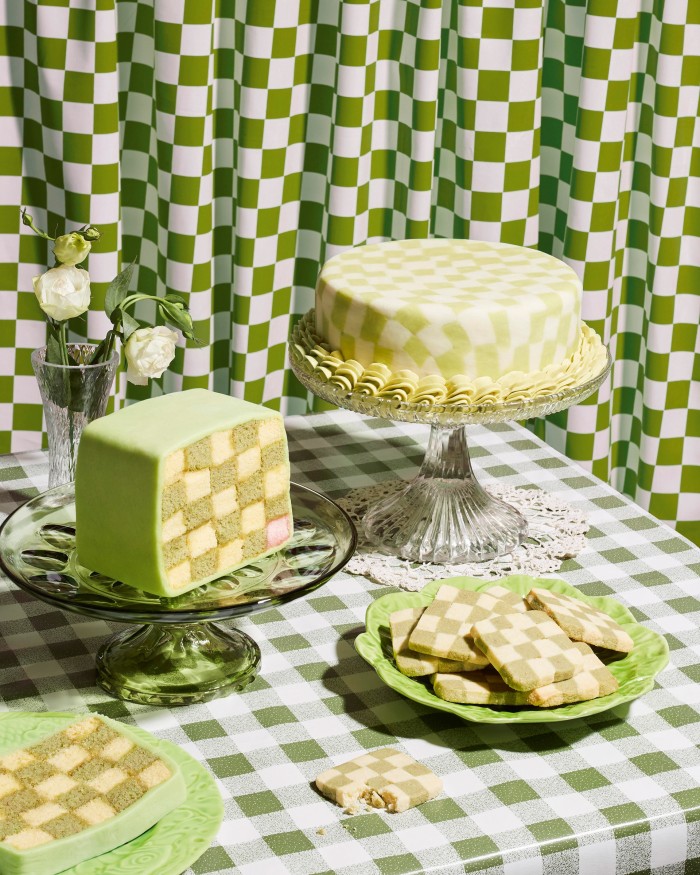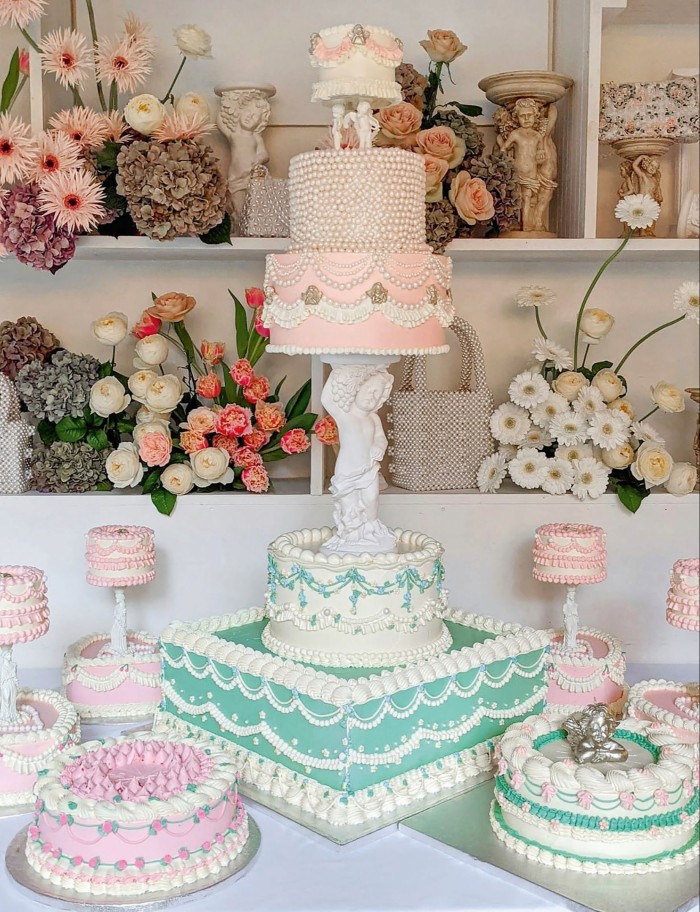Meet the food artists who are moving us to tiers

Roula Khalaf, Editor of the FT, selects her favourite stories in this weekly newsletter.
It is the baker’s crowning moment: three tiers of golden sponge cool on a cake rack, their texture light and craggy; buttercream oozes impatiently from a piping bag; and cherries, stalks left on and soaked in liqueur, are on standby next to a platter of sprinkles, ganache and edible trimmings. At last, decoration can begin.
Cake making has come a long way since the “biscuit bread” sponges explored by Gervase Markham in his 17th-century cookbook The English Huswife. Indeed, you need only look at the work of Eddie Spence, the retired royal cake decorator, to appreciate baking as a bona fide art form. Spence made structures from hard white icing – most notably the 21in golden carriage cake for the Queen’s Silver Jubilee – but the latest clutch of cake makers are taking a softer approach with airy chiffon sponges and retro-style cream frills.


Sarah Hardy of London-based Hebe Konditori studied sculpture at The Glasgow School of Art, and the medium has directly informed her elaborate, buttercream-loaded bakes (from £52). “There is something very joyful about the excess and maximalism of the current cake-decoration trend,” she says. Baking, by nature, is a therapeutic practice, but there’s also something to be said for the solace of an immaculate layer of icing. Take the 8m posts tagged to #cakesofinstagram as testament to the contemporary appetite.
Similarly to Hardy, Roxy Mankoo launched April’s Baker on the back of a diploma in art and design. With her sister Corinne, Mankoo sells bespoke creations (from £35) inspired by rococo gilding, Marie Antoinette and the “cakes of royal weddings in the 1950s”. A recent order for Alexa Chung even incorporated a photo of Bob Dylan. “It’s about showing off your skills and artistry,” says Mankoo. “People want to see the simpler joys of life made extra-special.” And what could be more jubilant than a five-tiered chocolate sponge?


Cakes have been used to make merry since Ancient Greece, when they were baked to honour the moon goddess Artemis. They are, as Mankoo says, “the centrepiece to any celebration”. Desire for bespoke bakes is now rivalling that of flowers, with creatives choosing to complement launches and celebrations with pastel-coloured sponges. See Hebe Konditori’s creations for a Burberry afterparty last year; cakes by Coven Bakery (from £55) in a recent shoot for accessories brand Suryo; and the pearl-encrusted collaboration with fashion brand Shrimps to mark the 10th anniversary of bakery Lily Vanilli (from £35).
As food historian Annie Gray points out, buttercream is a versatile – and tasty – ingredient, particularly when compared to the royal icing of yesteryear. “Buttercream feels more decadent, you can flavour it more easily, it’s mouthfeel,” she says. “If you’re using royal icing, you pretty much have to use rich fruit.” Los Angeles baker Loria Stern uses buttercream with sponge, allowing her to complement her flower-studded cakes (from $500) with delicate Earl Grey, rose and cardamom flavours. Sugar fanatics might look to Coven Bakery’s banana caramel cake – with or without piped daisies (from £55).

More often than not, requests are sentimental. A recent commission for Yorkshire-based Noonchi Cake (from £30) was inspired by a late grandmother’s favourite cocktail – a snowball – that required baking a white sponge (without egg yolk) with coconut milk and white-chocolate buttercream. “Decorating is like putting together an outfit for the cake,” says Noonchi founder Danielle Payne. “I love having the opportunity to be part of people’s happy moments.”
Comments